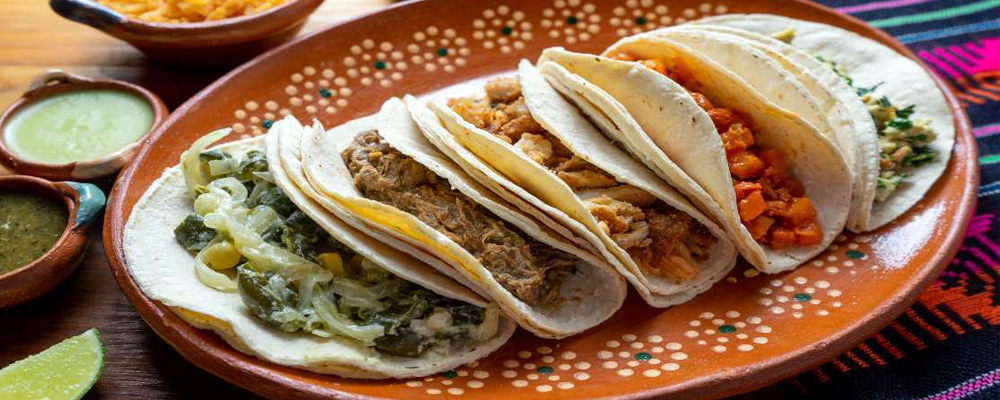
Mexican food has an extensive number of dishes that make it stand out nationally. From the famous tamales, mole, pozole, chiles en nogada, carnitas, barbacoa, cochinita pibil, birria among others; Mexican dishes make the nation a gastronomic paradise where you can taste all known flavors.
However, there is no dish more famous -whether locally, nationally or internationally- within Mexican food than the taco.
The taco is the quintessential Mexican dish. From the subjective representations of Hollywood movies that talk about Mexico, to the walk you take in any small town or city; you will undoubtedly find the image of the taco as a reference of Mexico.
Already part of Mexico’s cultural diversity, the taco itself contains a diverse amount of ways to prepare it, and ways to enjoy it. Whether it is pastor, carnitas, longaniza, cochinita pibil, barbacoa, birria, carne asada, stew, dorados, among others; the taco is a wonderful dish that has accompanied Mexico since before it was known by that name.
At the same time, eating a taco is eating the whole gastronomic history of Mexico; since when tasting a pork taco, we can remember the history of Hernán Cortés; when tasting a taco de canasta, remembering all the workers of Tlaxcala who ate these days a day; when eating a stew taco, remembering the Olmec and Mexica traditions, with Moctezuma holding his food with the tortilla.
In this way, the whole history of Mexico is just like the history of the Taco. The story of a series of fortuitous encounters between cultures, which constantly make our country incredible.
The first traces of a diet based on a corn tortilla, with content inside, are found in the Olmec culture. However, others allude to Moctezuma as the creator of the taco, since he used to use the tortilla to feed the food. Other historians mention that during the time of the conquest, women used to send food in tortillas to the men who worked long days.
Another historian named Bernal Díaz del Castillo, tells us how the first taquiza in history was celebrated at a banquet of Hernán Cortés, combining tortilla with pork.
Since then, there have been different events that have moved the gastronomy of different types of tacos, as well as the consumption of them. Tacos, during colonial times, were used as a way to discriminate against the lower classes and exalt the upper classes. This is due to the fact that the taco was a food for the working class; and this perception remained until a few decades ago.
In 1947, Fausto Celorio revolutionized Mexican food by inventing the tortilla machine, which is very easy to prepare and therefore makes taco production faster. This in turn made the taco become a common dish, both within street stalls and local, up to luxury restaurants.
In turn, due to the scarcity of employment, in Tlaxcala a dish began to become popular where the greased tacos were transported in baskets: the taco de canasta. Thus, the state became a pioneer in the consumption of tacos with the intention of being a cheap meal, usually transported on bicycles, and reaching Mexico City, Puebla and Hidalgo.
By the year 1962, the United States franchise Taco Bell, popularizes a variety of tacos that to save the speed of preparing fresh tortillas; decides to start replacing the tortillas with the so-called taco shells. Tortilla shells that allow the taco to be prepared in a fast food manner.
To reclaim the value of the taco, in Mexico City during the 60’s, after the great Lebanese migration to Mexico, they began to try to recreate foreign dishes; without much success due to the need to replace ingredients. Thus, trying to recreate the gyro from Greece, the kebab from Turkey and the shawarma from Lebanon, Mexicans create a kind of pork marinated with axiote. This marks the creation of the taco al pastor; one of the most emblematic tacos eaten by the Mexican population.
Thus, by the 1970s and 1980s, taco stands became an important part of Mexico’s gastronomic culture. No matter where you are in the country, you will undoubtedly find a taco stand where you can eat and taste this history.

